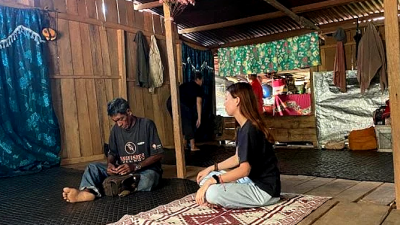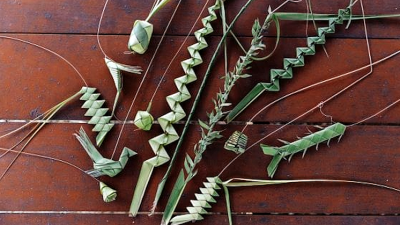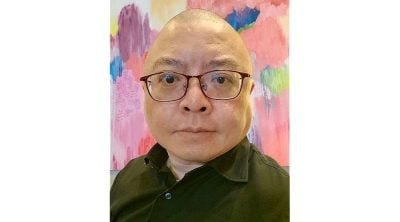
My classmates and professors from the Anthropology Department of National Taiwan University were at a pub to celebrate the end of a semester last Christmas Eve.
By midnight, most patrons at the pub had left, but a classmate of mixed Tsou and La Aluwa heritage enthusiastically pulled out a guitar.
An Paiwan tribe classmate casually provided a key, and as the rhythmic accompaniment began to play, the cold city of Taipei was instantly warmed by the heartfelt love songs of the Amis people.
I have always felt that when I first studied at a university in Taiwan, I only came to know the “superficial culture” of this beautiful island.
It was not until my second time here for graduate school that I began to see the “details of life” hidden in its mountains, rivers, soil, and plants.
I have visited Taiwan’s Orchid Island (Lanyu), meeting with the Tao people in their traditional underground homes in the past one year.
They shared stories about the taboos of the flying fish season, including how couples must abstain from intimacy, and how children born in January or February are seen as “illegitimate”.
I also visited an Atayal tribe in Yilan, where they told me that if they do not recover their gaga (ancestral teachings), their traditional culture will vanish.
Before I left, they gave me a lucky seed called qaluh (forest vines), saying if a tribesman finds one, he carries it to ensure a bountiful hunt.
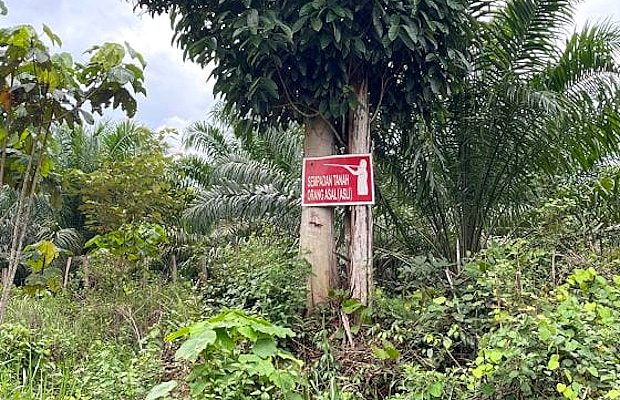
These plants only survive in the lowland forests – areas now heavily developed – making them increasingly rare.
Recently, I climbed Alishan in Chiayi, where I saw a sky full of stars, with the Tsou people, tasted mountain deer for the first time, and heard a mother-daughter artist duo recount how their grandfather was “killed” by Bunun black magic but “revived” by a Tsou shaman.
Interestingly, although the Tsou and most of Taiwan have converted to Christianity, they still believe ritual dates must remain secret to prevent plants from “eavesdropping” and evil spirits from interfering.
If these stories seem magical or even like fiction to you, it’s likely because you and I are both rootless city dwellers.
In truth, Malaysia, too, has groups of people who still practise animism. Their names may not appear in history textbooks, government systems, or ethnic classification lists, but they understand better than anyone how forests think, animals speak, and plants weep.
On Peninsular Malaysia, they are called Orang Asli; in Sabah, the Anak Negeri; and in Sarawak, the Dayak and Orang Ulu.
Collectively, these indigenous groups are known as Orang Asal, comprising nearly 100 different tribes.
For instance, on Peninsular Malaysia alone, there are 18 officially recognised tribes, with academia acknowledging a 19th: Kensiu, Kintaq, Lanoh, Jahai, Mendriq, Bateq, Temiar, Jah Hut, Che Wong, Semai, Mah Meri, Semaq Beri, Temuan, Semelai, Jakun, Orang Kanaq, Orang Kuala, Orang Seletar, and Temoq.
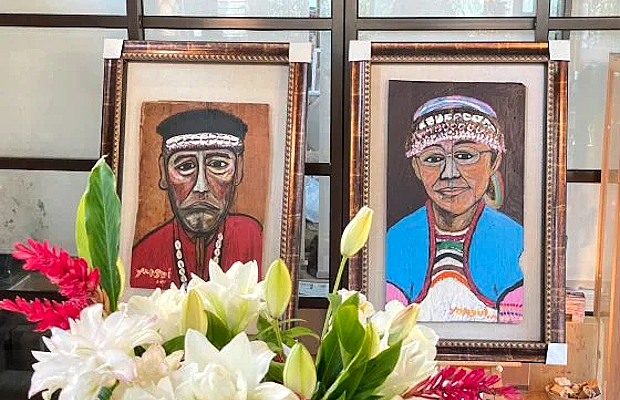
The government excludes the Temoq tribe, declaring them “extinct”.
They were also not categorised by the British colonialists’ three main indigenous classifications – Negrito (Semang), Senoi, and Proto-Malay.
Living like ghosts on their native land, their existence is barely acknowledged.
Many Malaysians may have never heard of these tribes or even seen them in person.
Most Malaysians from the Peninsula don’t even realise that indigenous people live on the peninsula, while East Malaysians may assume indigenous heritage is exclusive to Borneo.
Over 60 years since the formation of Malaysia, how has the government so effectively hidden these communities? The reason is simple: their population is insignificant.
According to Colin Nicholas, coordinator of the Centre for Orang Asli Concerns (COAC), the official Orang Asli population on Peninsular Malaysia as of 2024 is only 240,000.
However, an unofficial estimate, based on 70,000 households with an average of 5.5 members, puts the figure closer to 385,000 – just 0.7 to 1.13 per cent of the national population.
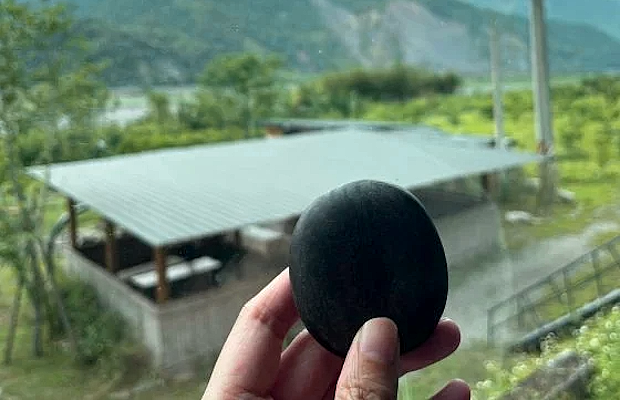
The Malaysian government has perpetuated the British colonial legacy of “divide and rule”, and this has led to a societal understanding of ethnic structure confined to the “three main races” – Malay, Chinese, and Indian – without contemplating who the “others” (dan lain-lain) are.
For Malaysians living in the rural area of the peninsula, even if they are aware of Orang Asli nearby, they often judge them by “modern” standards, labelling them as “lazy” or “backward” for not fitting into their capitalist ideals.
One unforgettable experience was at a forum where I met activists from the Jah Hut tribe in Pahang, the Bidayuh and Penan tribes in Sarawak.
Despite their different backgrounds, all three said the same thing: in their villages, different bird calls signal different times of day, good omens, or warnings of disaster.
One of them shared: “At the end of 2019, the forest went eerily silent – no insects, no birds. Shortly after, the Covid-19 pandemic erupted.
“We believe these animals are messengers from the gods. They live in the land, and we humans walking on it are mere passers-by.”
In recent years, Malaysia has experienced frequent floods. While such disasters used to mainly affect forest dwellers, urbanites are increasingly feeling Nature’s backlash.
I have always loved Aurora’s song “The Seed”, whose chorus laments:
“When the last tree has fallen
And the rivers are poisoned
You cannot eat money, oh no.”
How many more forests will disappear? How much ancient wisdom will be lost forever? I have no clue. But I am certain that if we do not plant the “seeds of words”, soon there may be no one left to remember how morning birds tell the time.
More on the Echoes of the Forest
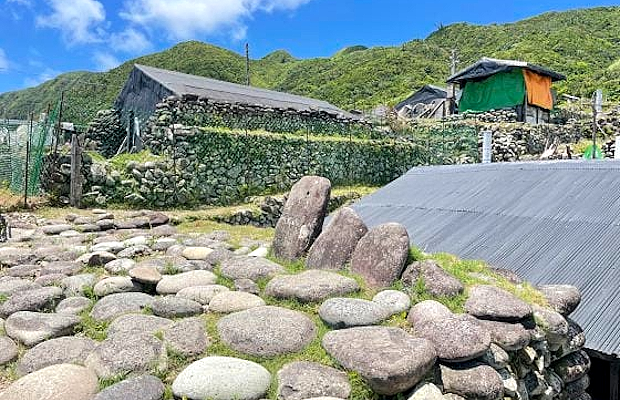
(Yi Ke Kuik is a Master’s student in Anthropology at National Taiwan University focusing on issues related to indigenous people in Peninsular Malaysia. Founder of myprojek04 photography initiative and writes for a column called Echoes from the Forest (山林珂普) in Sin Chew Daily, highlighting the photos and stories of indigenous people.)
ADVERTISEMENT
ADVERTISEMENT






